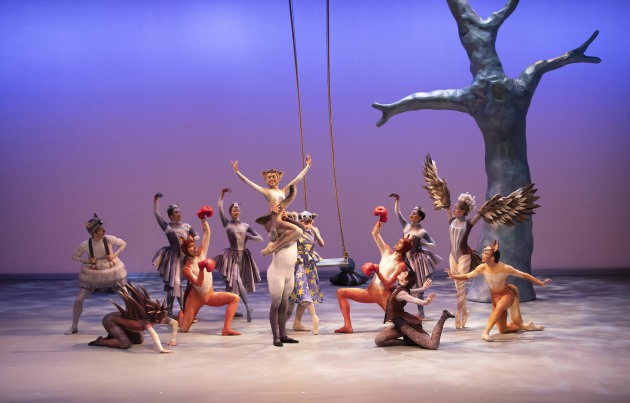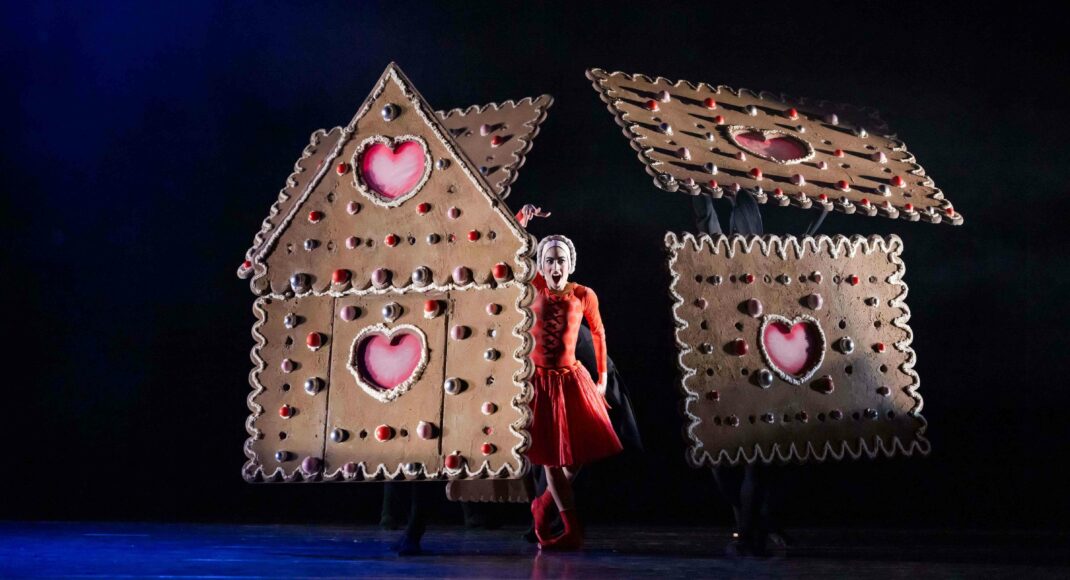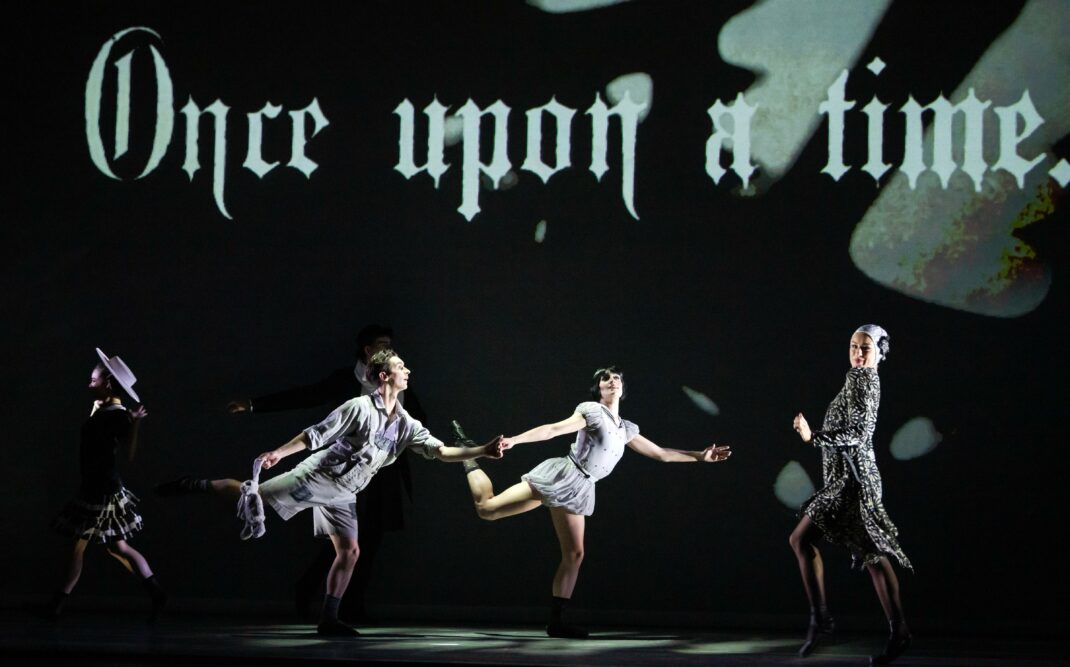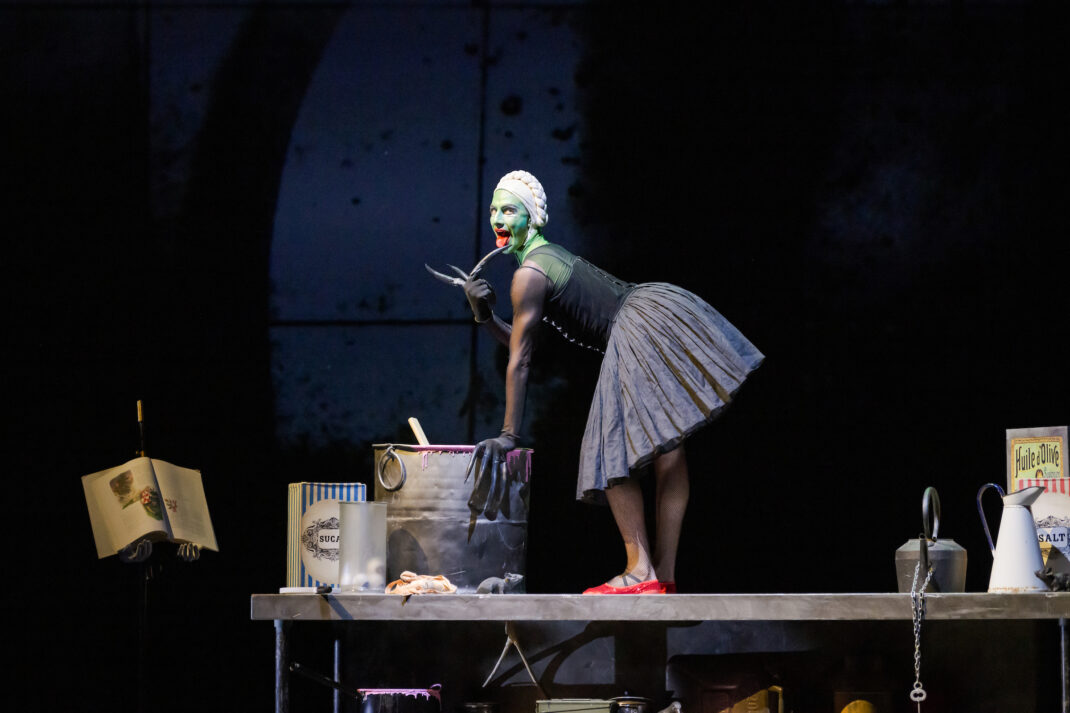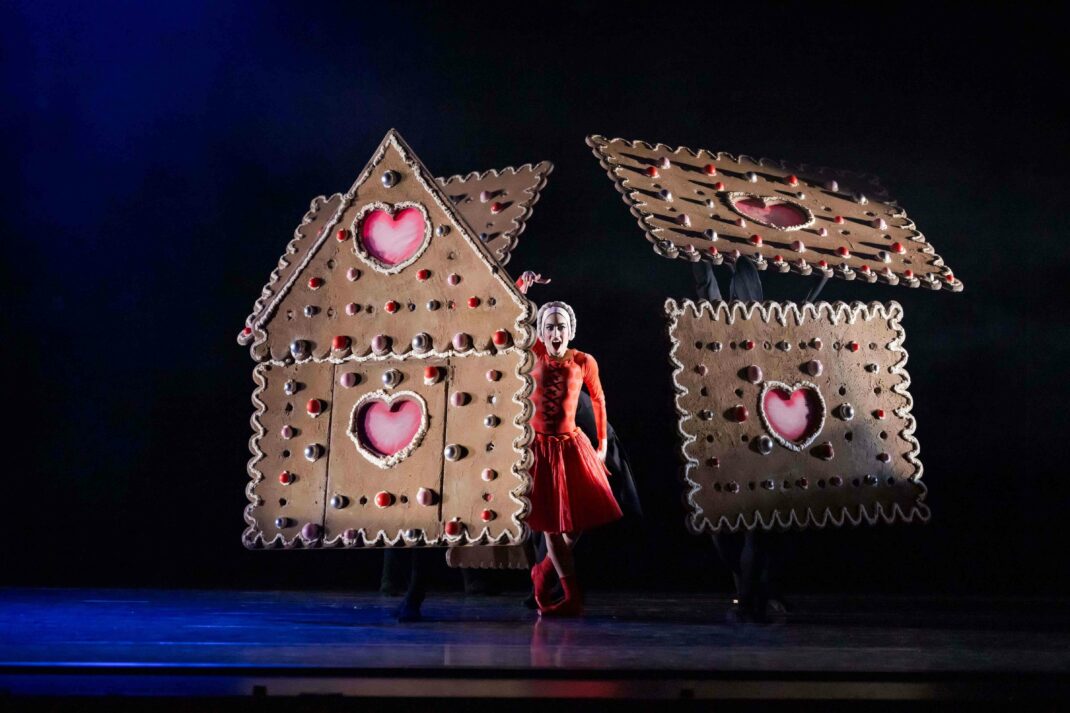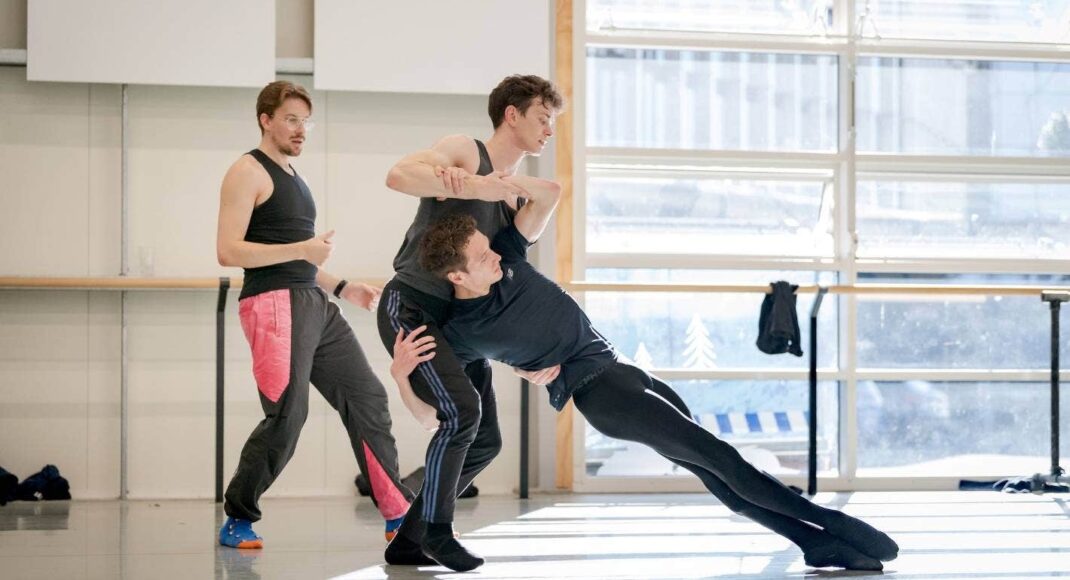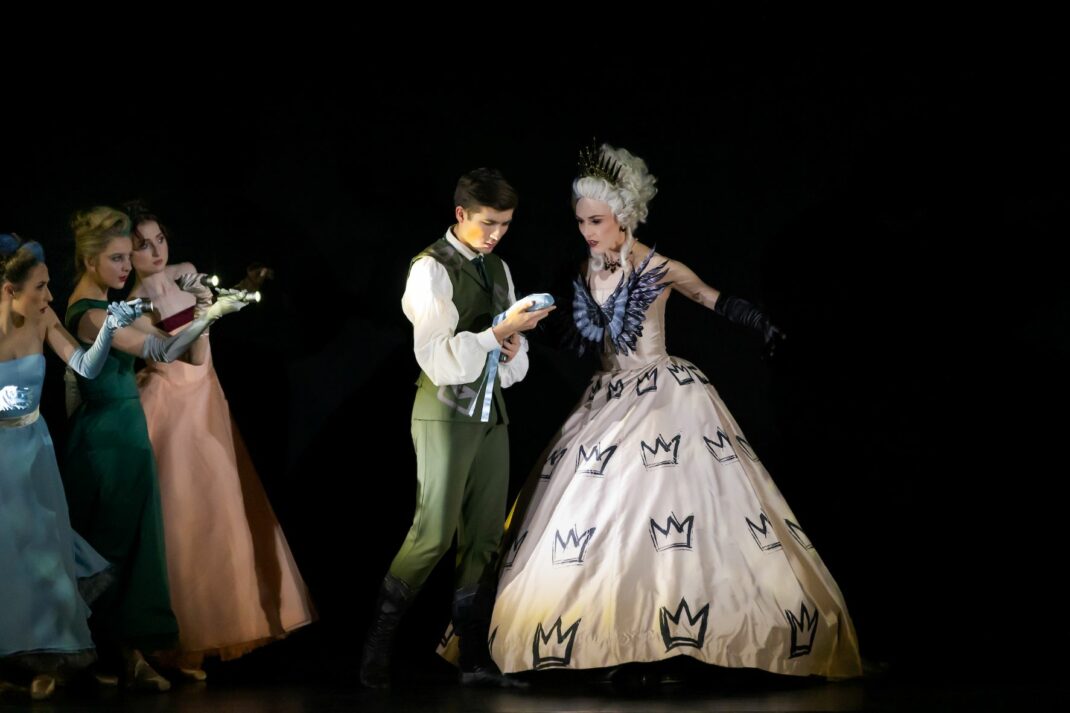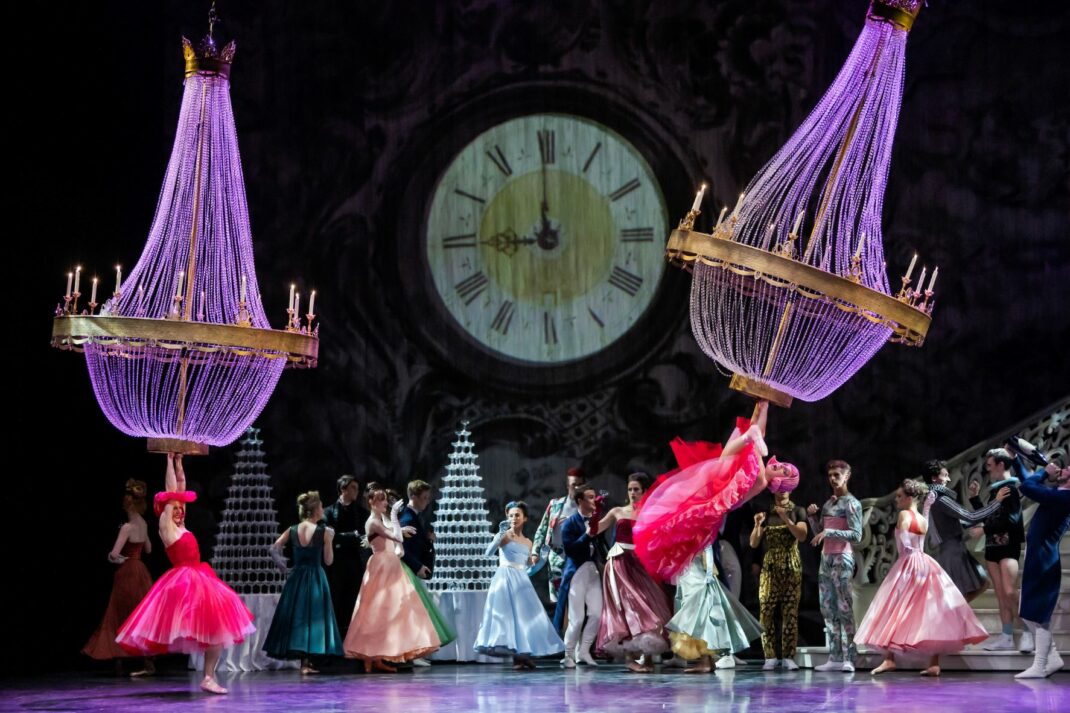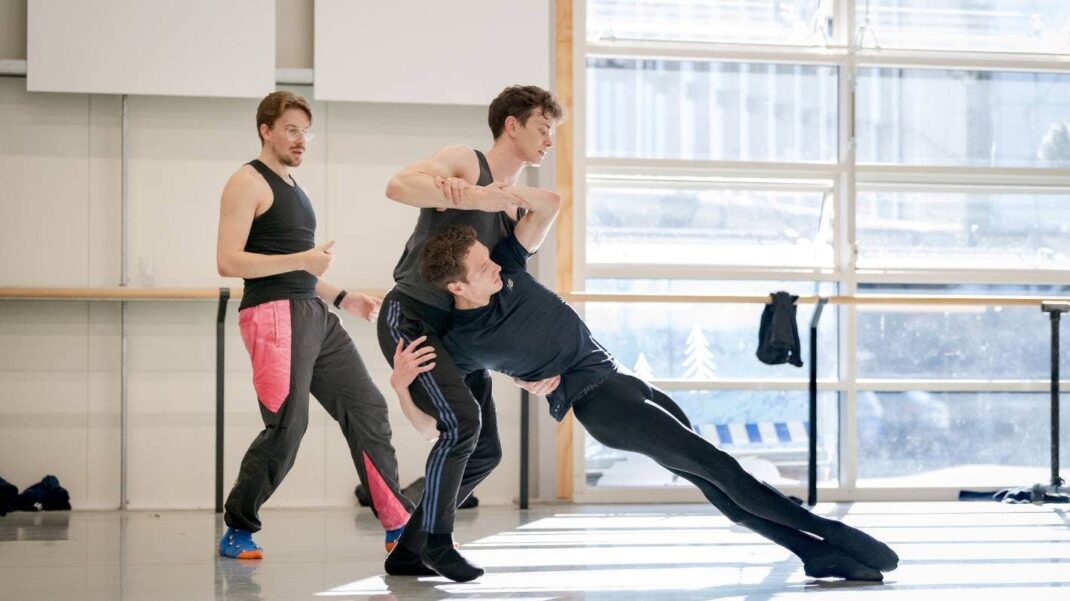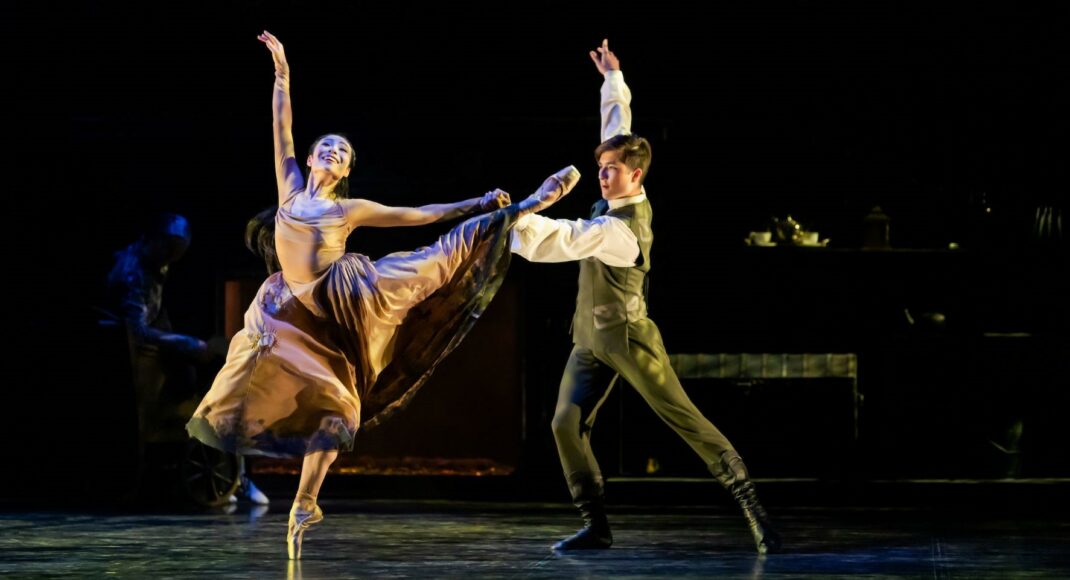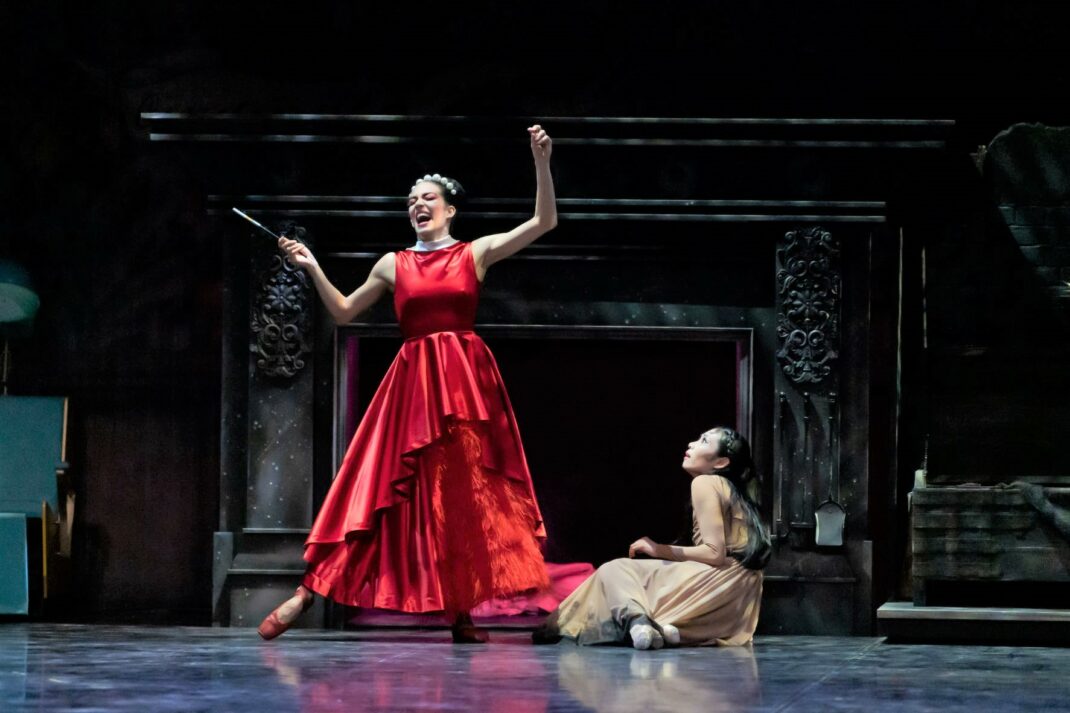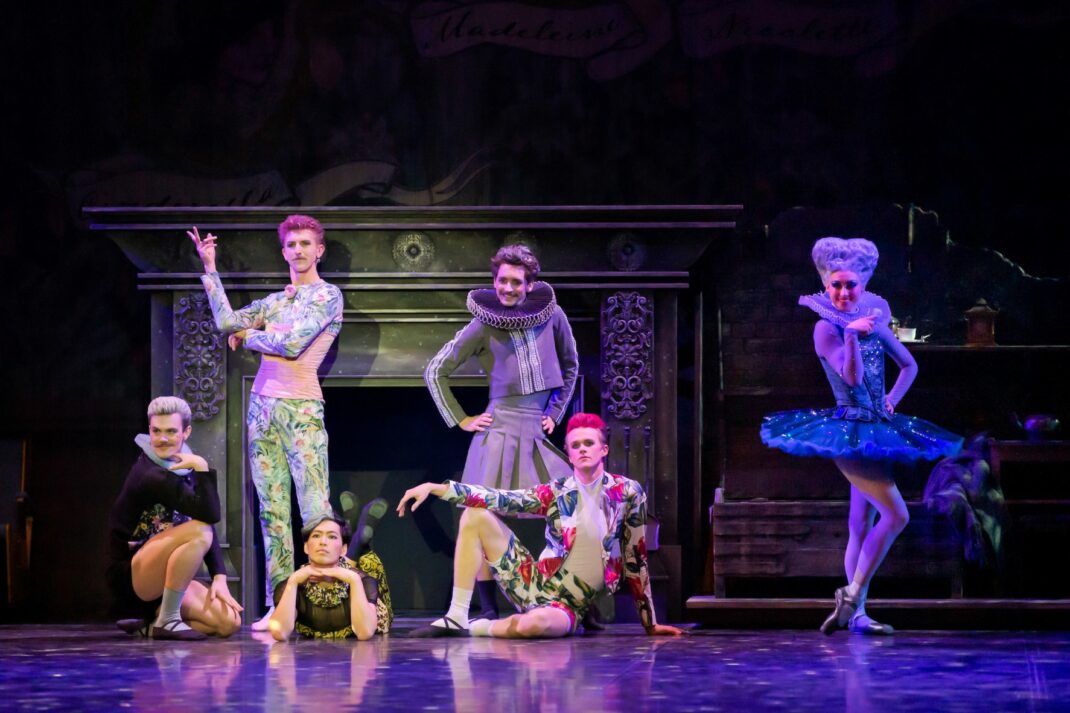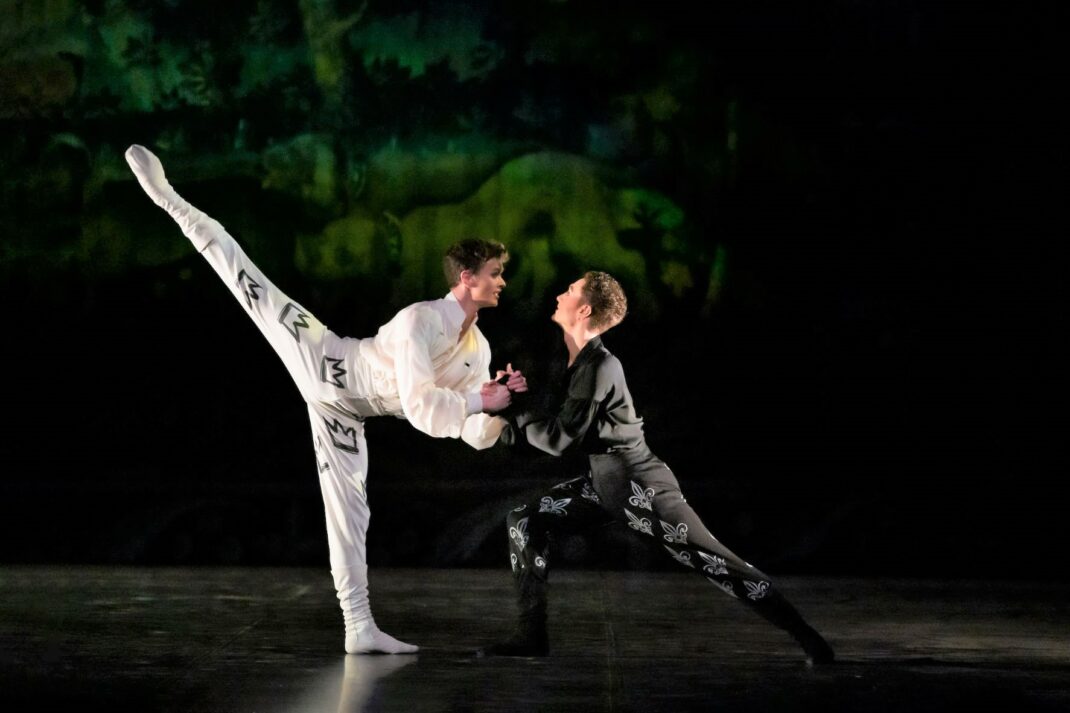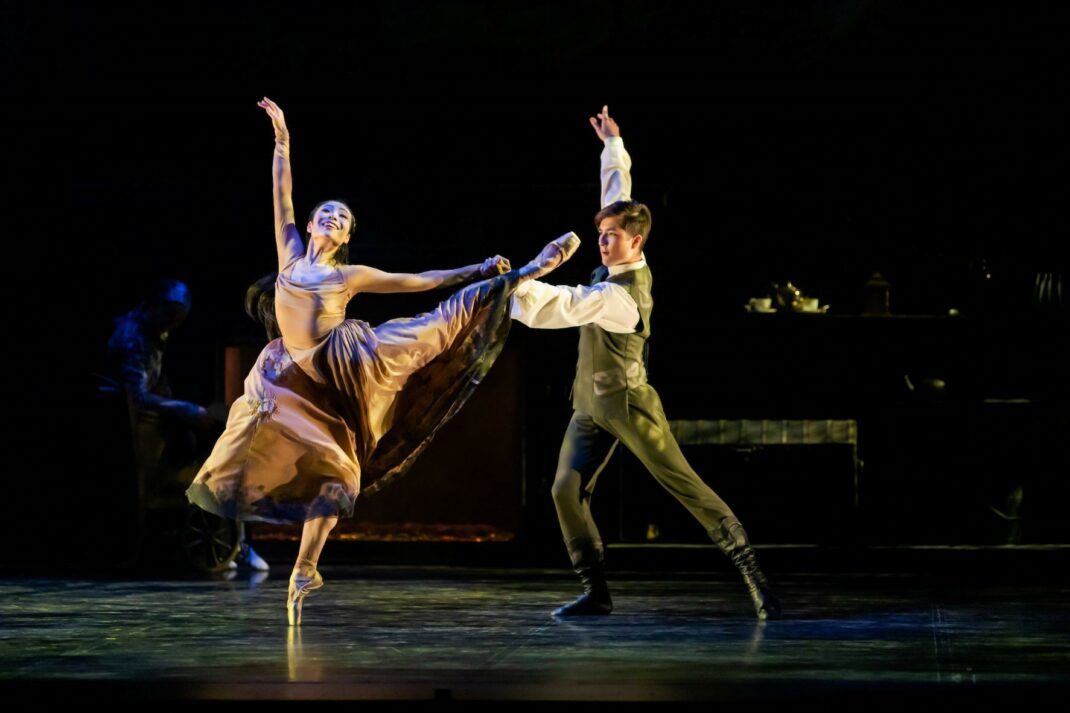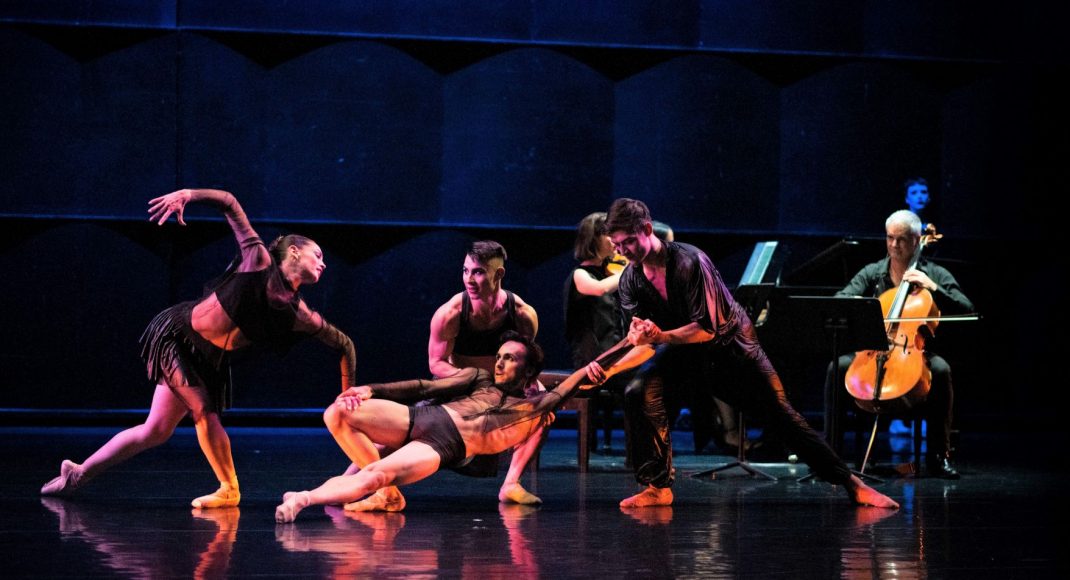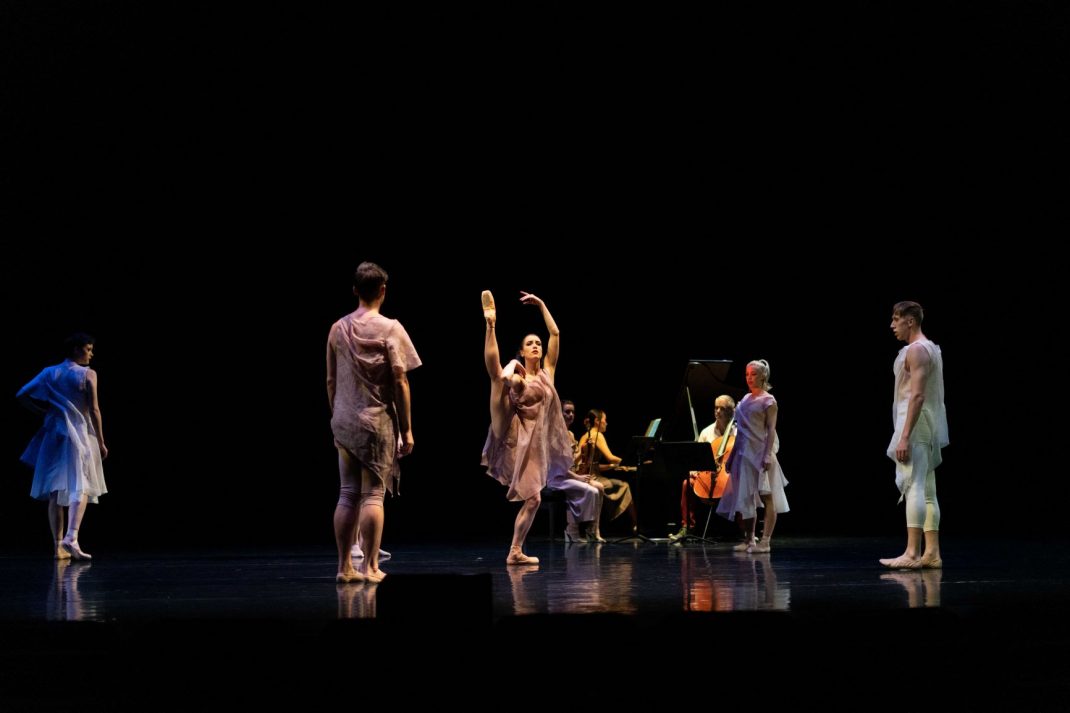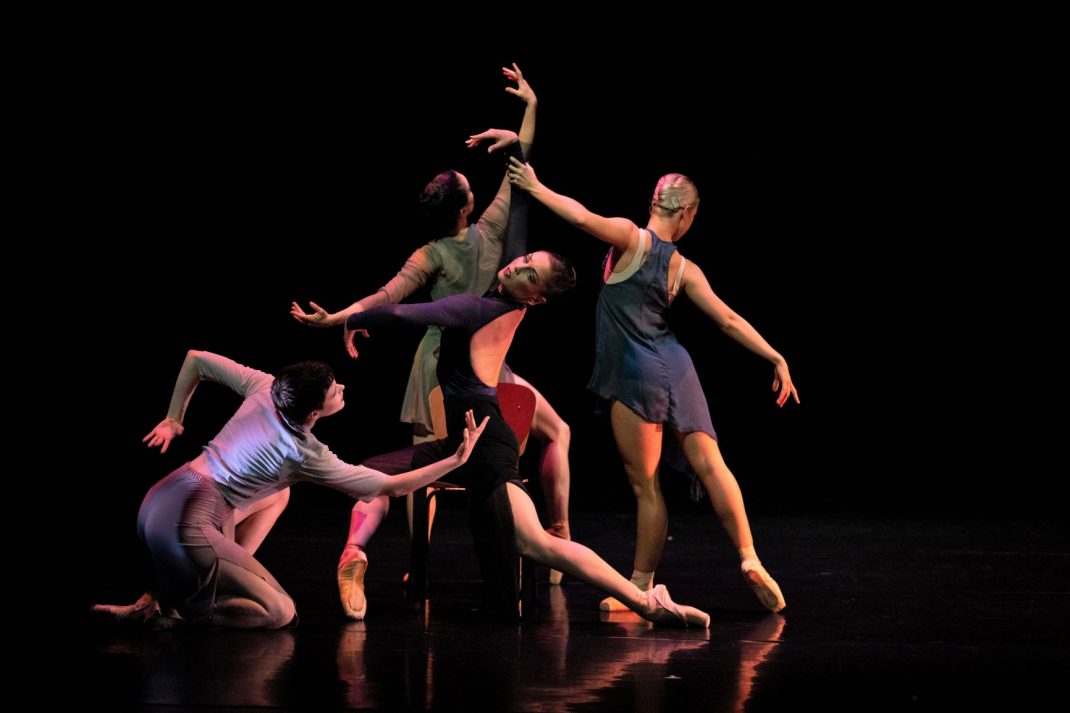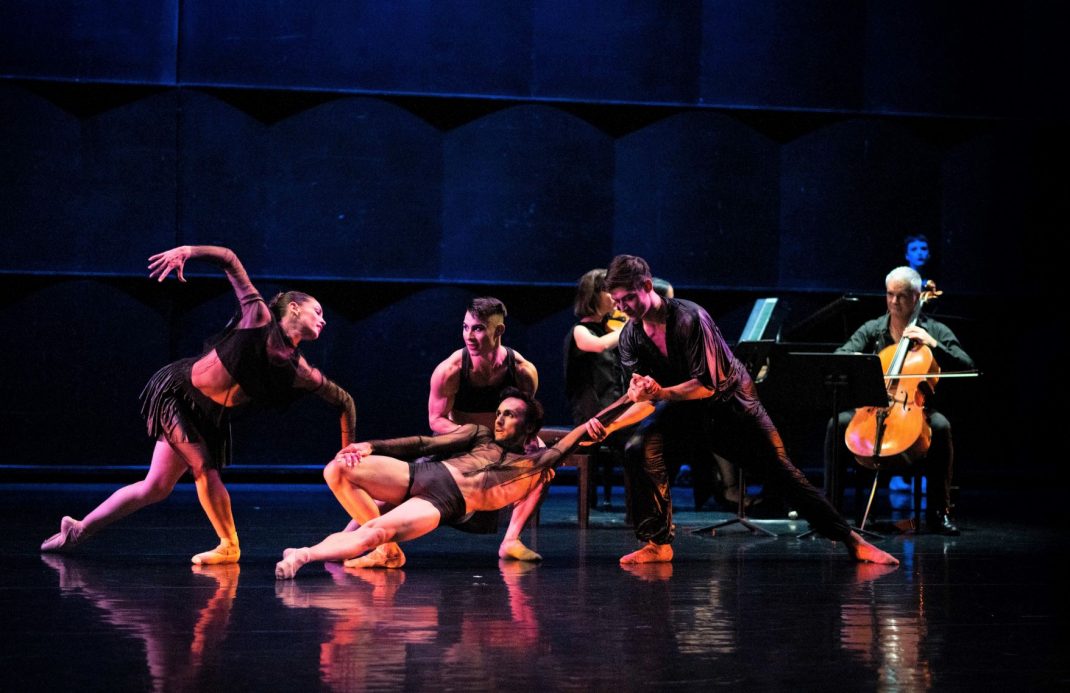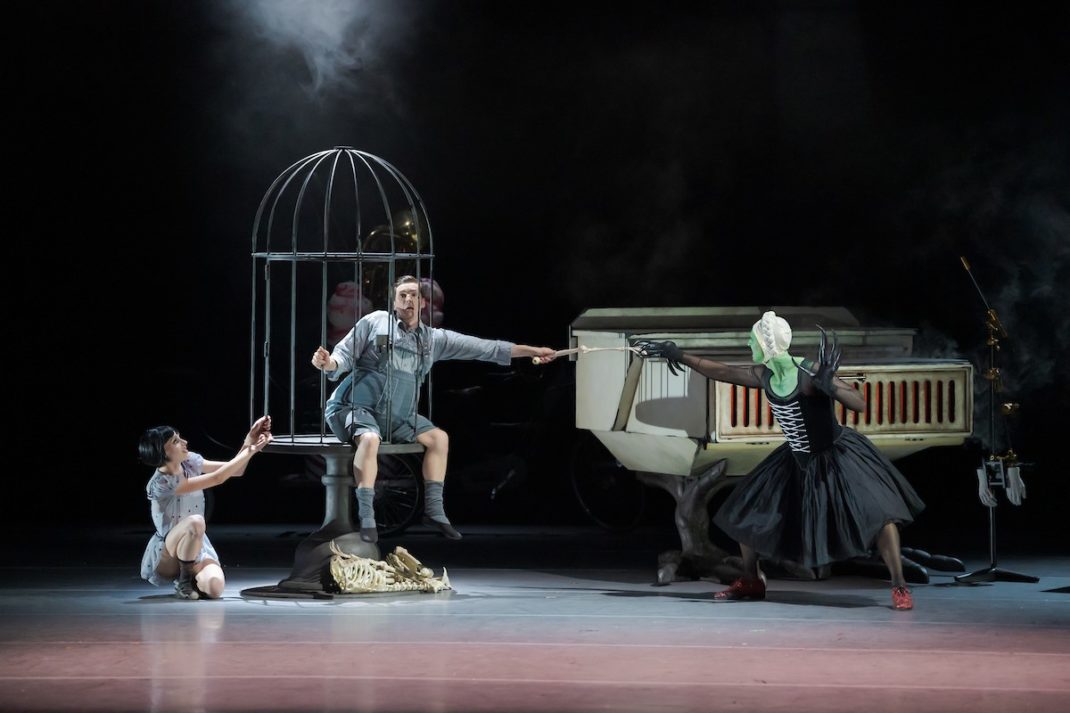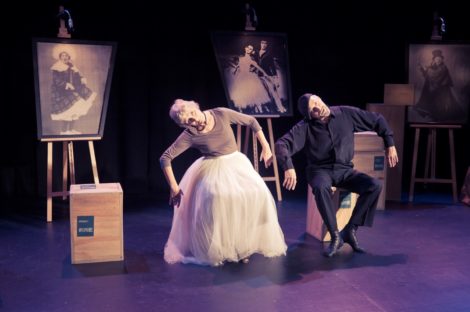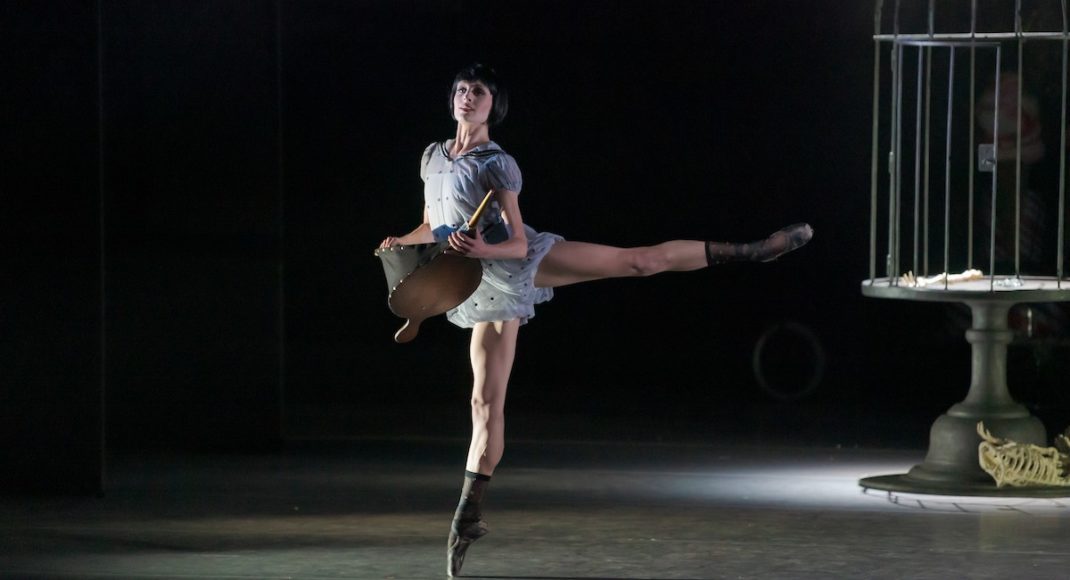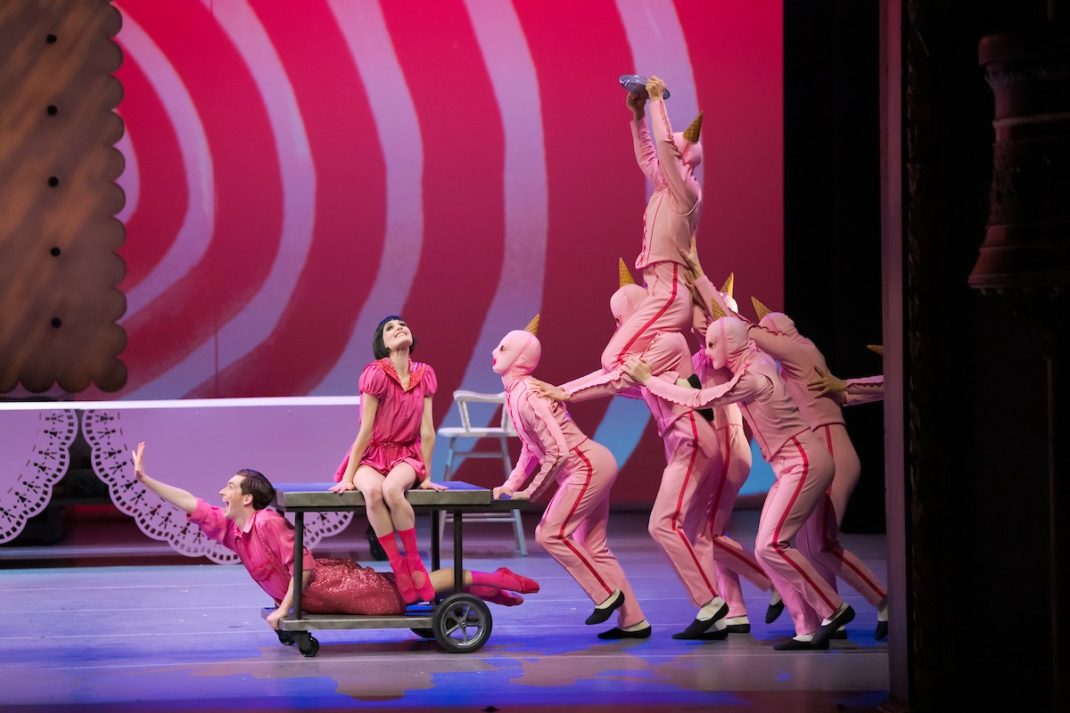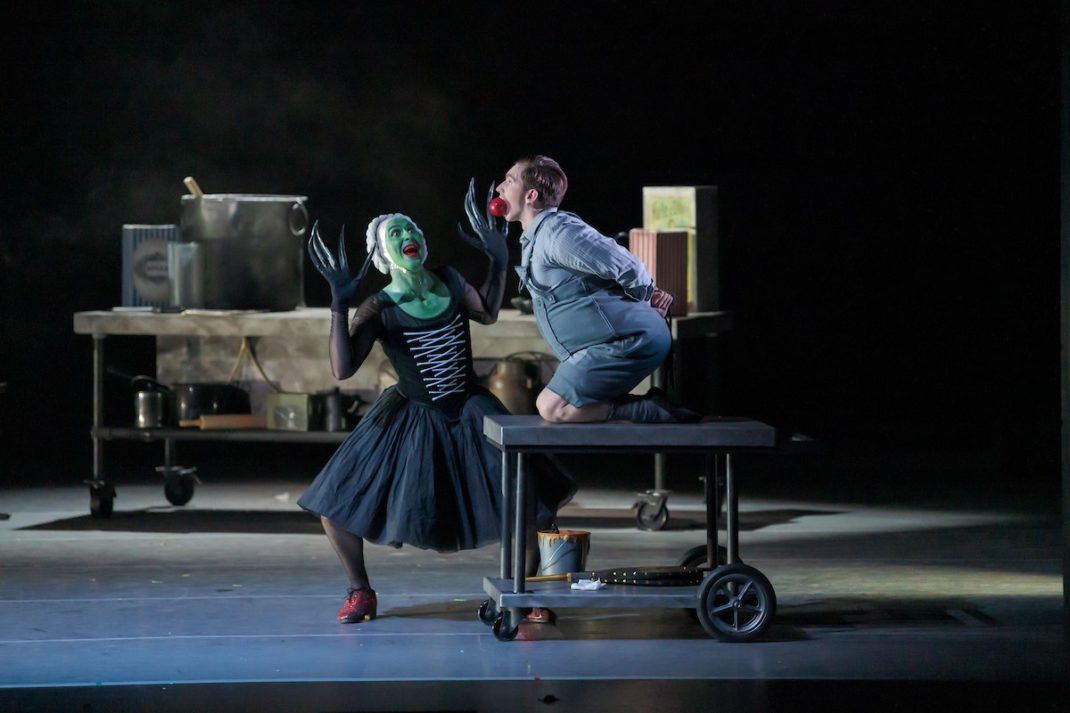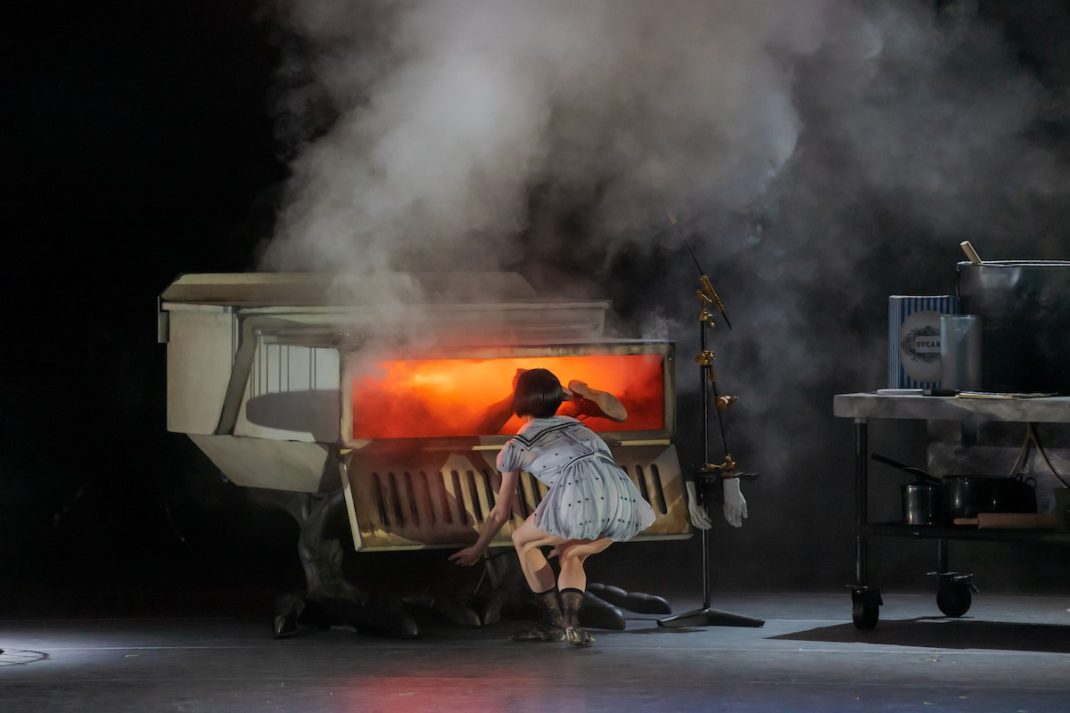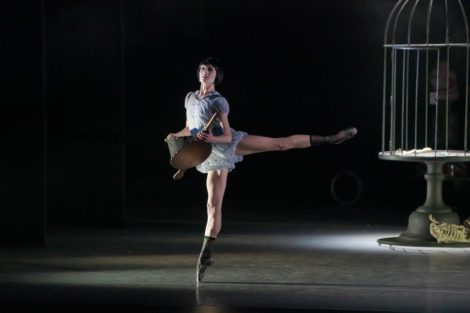8 December 2023. The Playhouse, Victorian Arts Centre, Melbourne
I was more than curious when I heard that Loughlan Prior was preparing a ballet based on the much-loved children’s book by Mem Fox, Possum Magic. I mean how on earth was he going to manage the invisibility of Hush, the possum character on whom Grandma Poss casts a spell making Hush disappear from sight in order to save her from danger in the bush? Despite the invisibility, Hush continues to play an ongoing, major role as her visibility slowly reappears. She rarely leaves the stage.
Well I need not have worried. It all happened with cleverly introduced costume changes and terrific input from the other characters who acted beautifully throughout to stage a pretence that they couldn’t see Hush while she was under the spell of invisibility.
Grandma Poss has forgotten the magic that will return Hush to a state of visibility and, as the story progresses, the invisible Hush and Grandma Poss hop on a bike and travel through the Australian countryside and the country’s major cities, nicely shown through snippets of film, looking for human food that might restore Hush’s visibility. After eating some typical Australian delicacies at various stops, including Pavlova, Lamingtons, Vegemite, Minties, Anzac biscuits and others, Hush returns slowly to a visible state. The critical items are Pavlova, Vegemite and Lamingtons and the return to visibility, and arrival back in the bush where the characters live, is warmly welcomed by everyone.
Milana Gould as Hush danced beautifully. Her finely boned body and her long and flexible limbs brought out the best in Prior’s choreography, which shows not only classical steps and combinations, but some more contemporary movements as well. Kit Thompson as Grandma Poss gave an outstanding performance with excellent stage presence and I especially enjoyed watching two sparring kangaroos (Thomas Boddington and Tadgh Robinson) and an impressive and quite dominant koala (Ethan Mrmacovski).
Possum Magic. The Ballet showed Loughlan Prior at his theatrical best. His insertion of film was exceptional as was his varied choreography to suit the characters, especially for the Pavlova ladies whose dancing was very classical indeed. His collaborators worked beautifully with him with a very danceable score from Claire Cowan, costumes and set from Emma Kingsbury (I especially loved the Pavlova tutus—red skirts trimmed with white Pavlova slices around the edges); and lighting from Jon Buswell. The ballet is a delight to watch and encapsulates beautifully the Mem Fox book on which it is based. It deserves further showings.
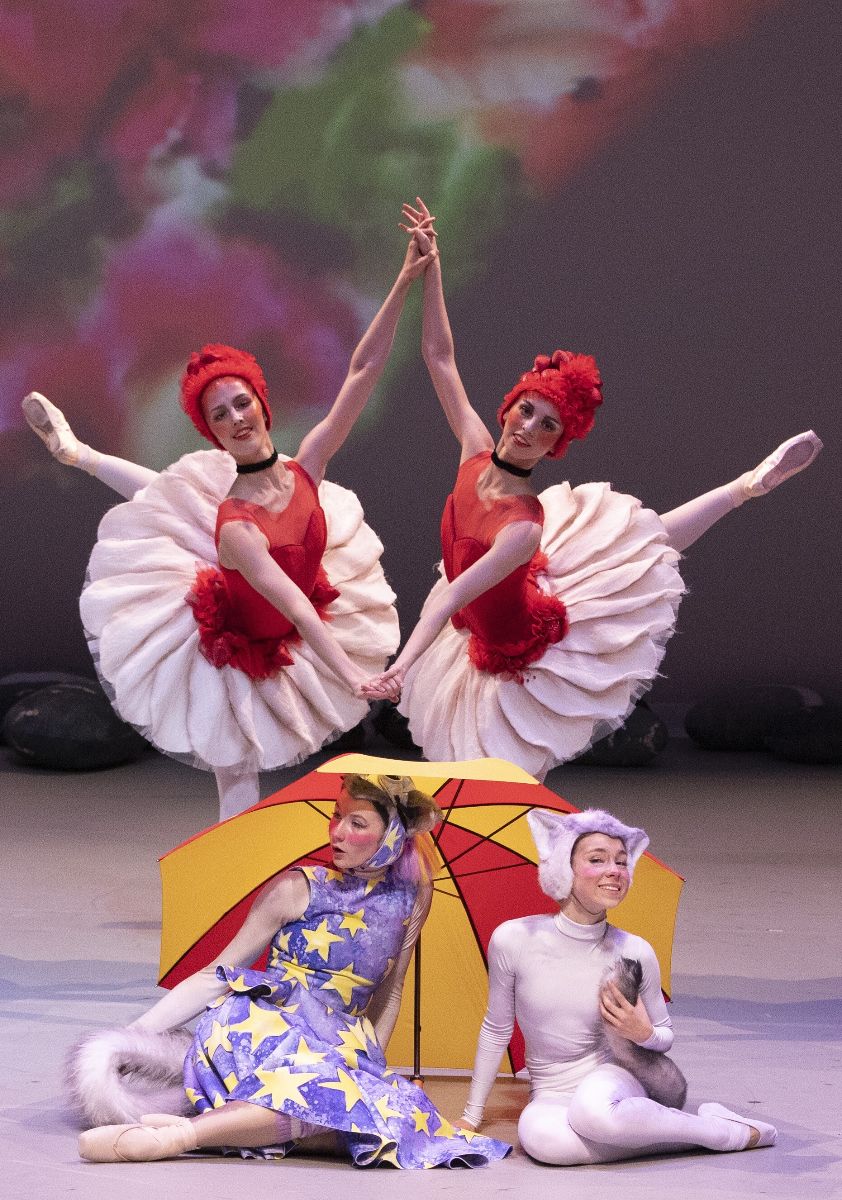
The second half of the program consisted of three short items, Degas dances from Paul Knobloch and largely danced by Level 4 students of the School with some outstanding solo sections from Ruito Takabatake; Nexus from Stephen Baynes for Level 7 students; and Techno Requiem from Lucas Jervies showing a contemporary dance style and strongly performed by Level 8 students. I was particularly thrilled to see Nexus as Baynes’ choreography is not often on show these days. Nexus, danced to Capriccio for Piano and String Orchestra by Graeme Koehne, shows Baynes’ innate musicality, his beautiful and sometimes surprising use of space, and his unique choreographic style and structure. But in all this second part showed off the range of dance that is taught at the Australian Ballet School.
Michelle Potter, 13 December 2023
Featured image: The characters in Possum Magic. The Ballet with Milana Gould as Hush (centre, held aloft by Koala). Photo: © Sergey Konstantinov
